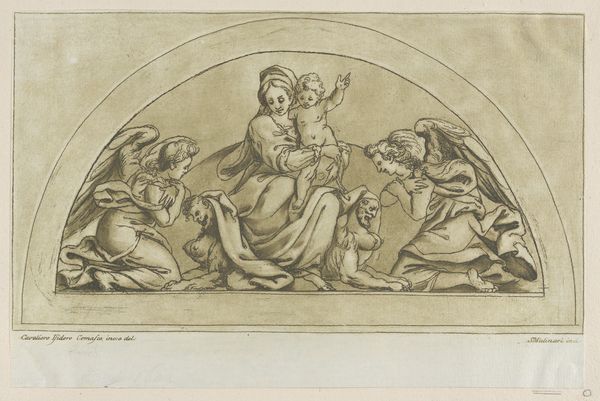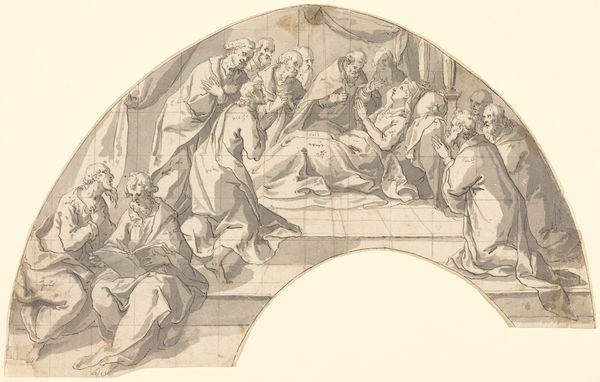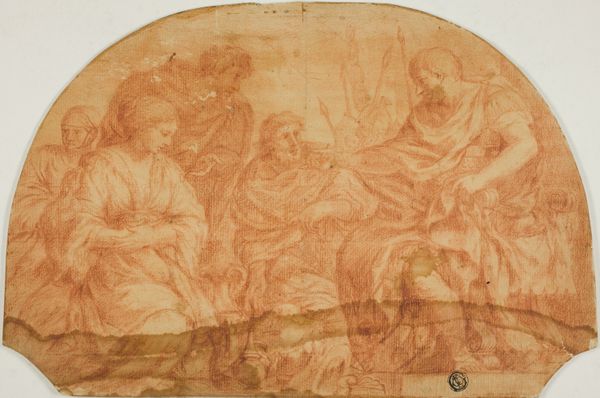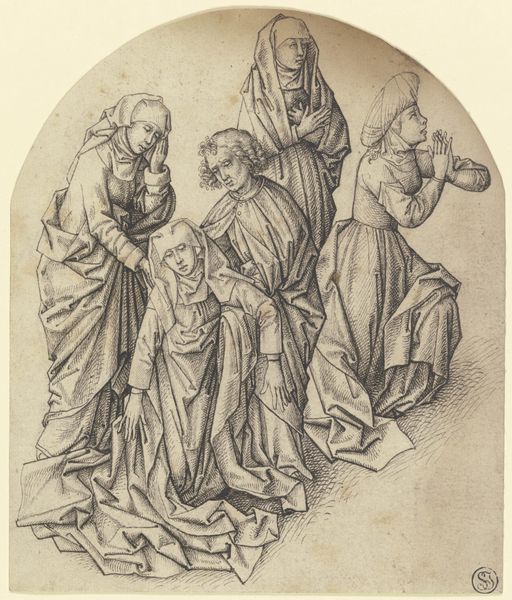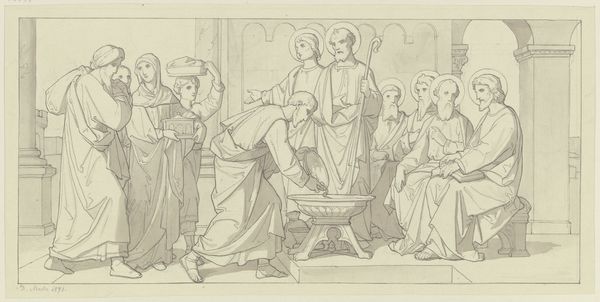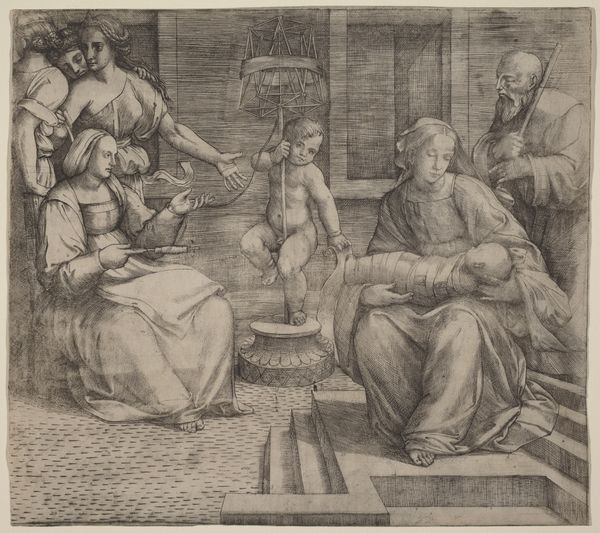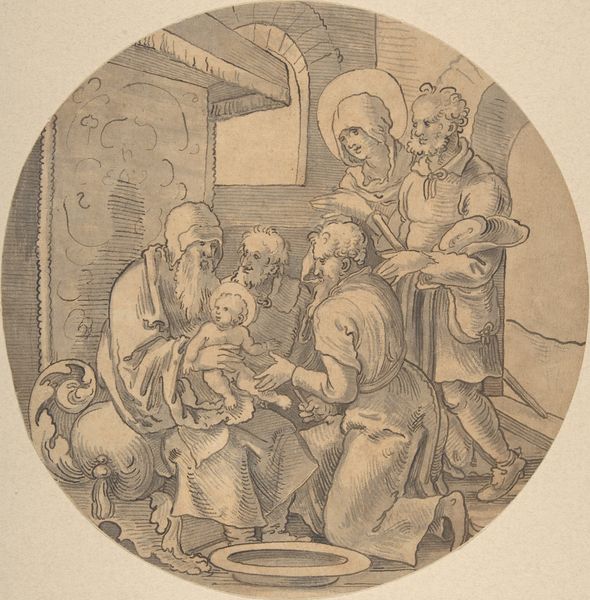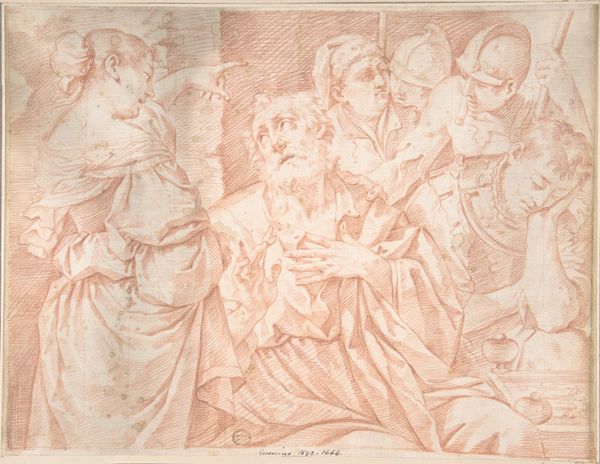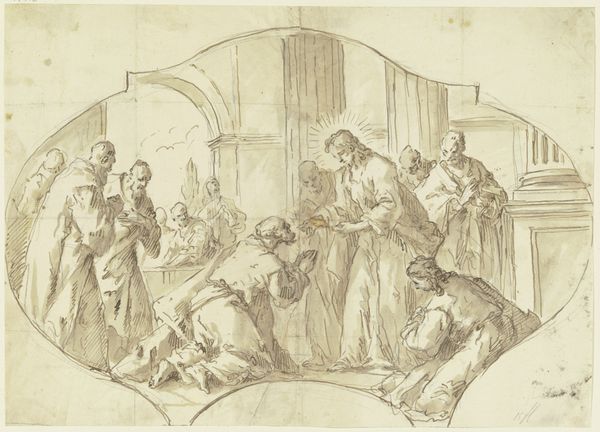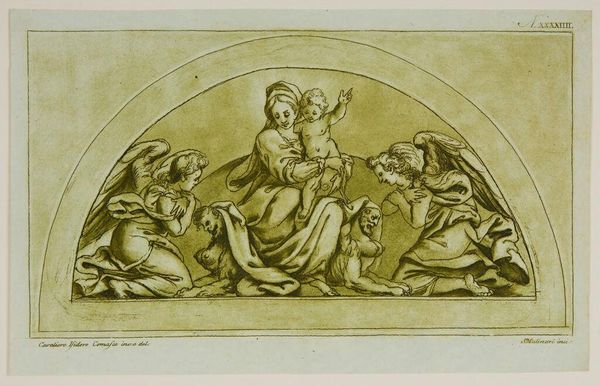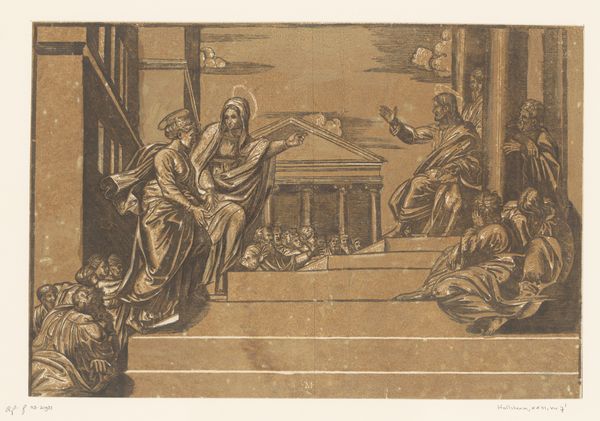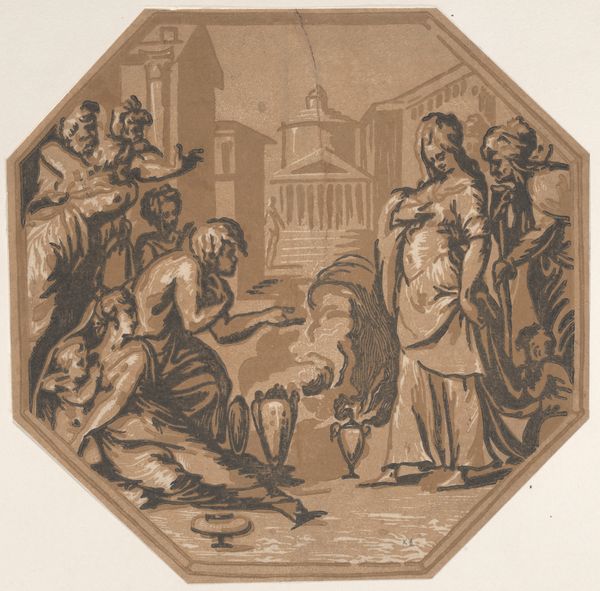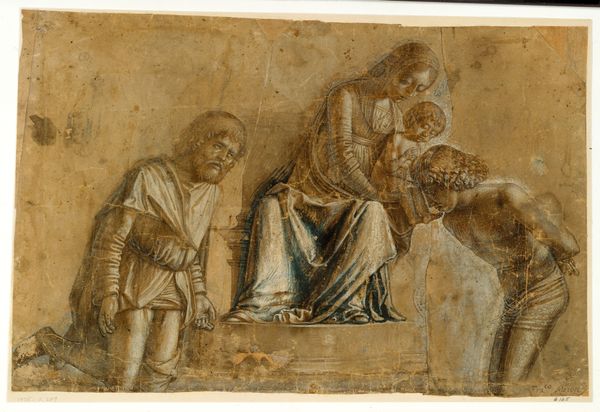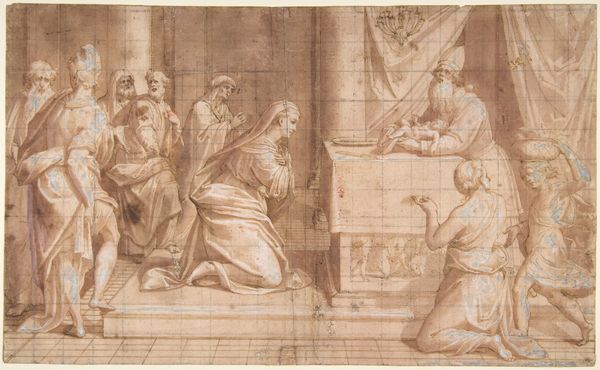
Lunette with the Madonna and Child with Sts Francis of Assisi and Catherine of Siena 1537 - 1627
0:00
0:00
drawing, paper, ink, pen
#
pencil drawn
#
drawing
#
pencil sketch
#
charcoal drawing
#
figuration
#
paper
#
ink
#
pencil drawing
#
pen
#
pencil work
#
history-painting
#
italian-renaissance
Dimensions: 109 mm (height) x 192 mm (width) (bladmaal)
Curator: At first glance, I see an exquisite interplay of lines, almost architectural in their precision. The umber tones evoke a sense of warmth and antiquity. Editor: Precisely. We are viewing "Lunette with the Madonna and Child with Sts Francis of Assisi and Catherine of Siena," a work on paper rendered in pen, ink, and pencil. It is attributed to Giovanni Battista Ricci. The dating is broad—1537 to 1627—but its presence here at the SMK provides us a glimpse into religious art production of that time. Curator: Look at the use of crosshatching—it provides remarkable depth and volume to the figures, wouldn’t you agree? The gridded under-drawing seems quite deliberate. Editor: Yes, you can really see the preparatory process laid bare, hinting perhaps that it served as a design for a larger fresco or altarpiece. The lunette format, after all, would commonly be seen above doorways or windows. Considering the prevalent imagery of the Madonna and Child flanked by saints, we might see how Ricci participates in the larger socio-religious framework by visualizing iconic figures in their historical time. Curator: Do you also see how each saint seems to present something to the Virgin— Francis offering what appears to be a church, Catherine with a bouquet of lilies, I presume symbolizing purity. The formal arrangement cleverly directs the viewer’s gaze towards the central figures. Editor: Yes, I do agree that the composition functions on multiple layers: one purely pictorial and devotional and another driven by institutional agenda and expectations in alignment with the patrons in Giovanni’s circles. The fact that these Saints were important figures, tied in popular lore to cities with established Medici links further illustrates art serving political roles, even subtly. Curator: Indeed, it’s fascinating how Ricci manages to integrate technical rigor with such apparent narrative elements, a harmonious blend of form and content, reflecting its cultural moment. Editor: Exactly. Artworks such as these illuminate the period's social fabric, showcasing the relationship between artist, artwork, patronage and public devotion. Curator: I leave contemplating not only artistic merit, but art as cultural artifacts, telling tales of their creation. Editor: And for me, contemplating the sheer virtuosity within such understated tonality.
Comments
No comments
Be the first to comment and join the conversation on the ultimate creative platform.
